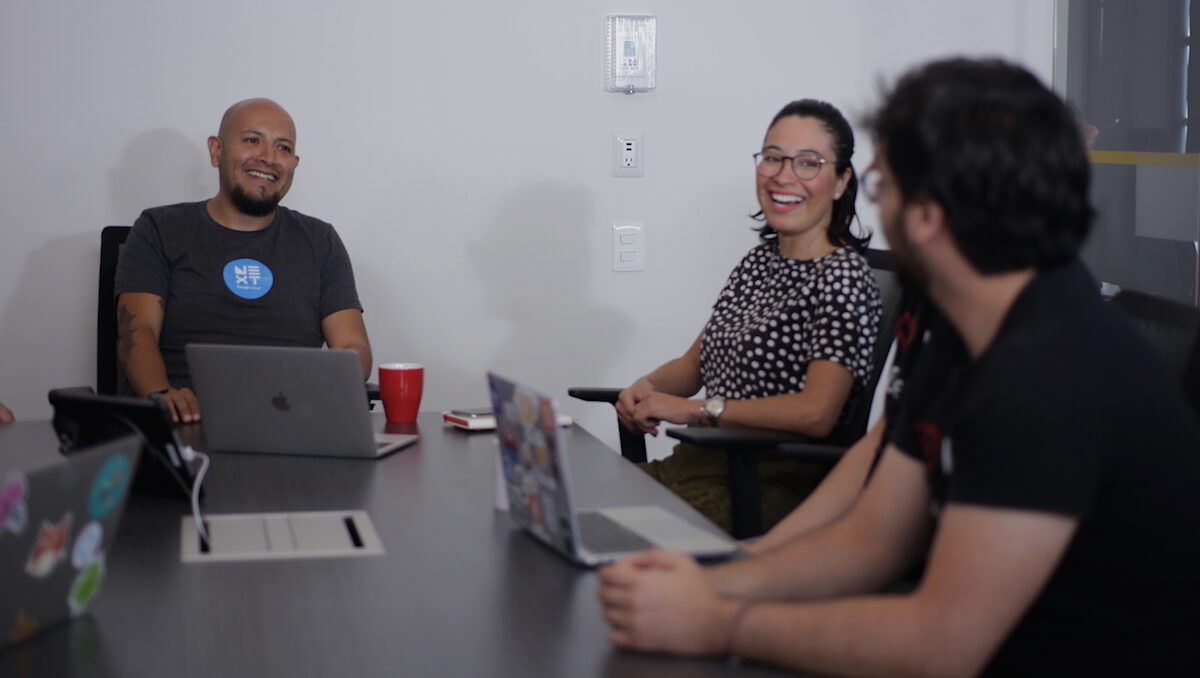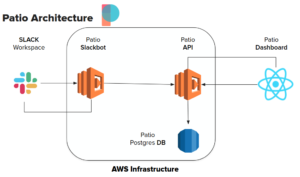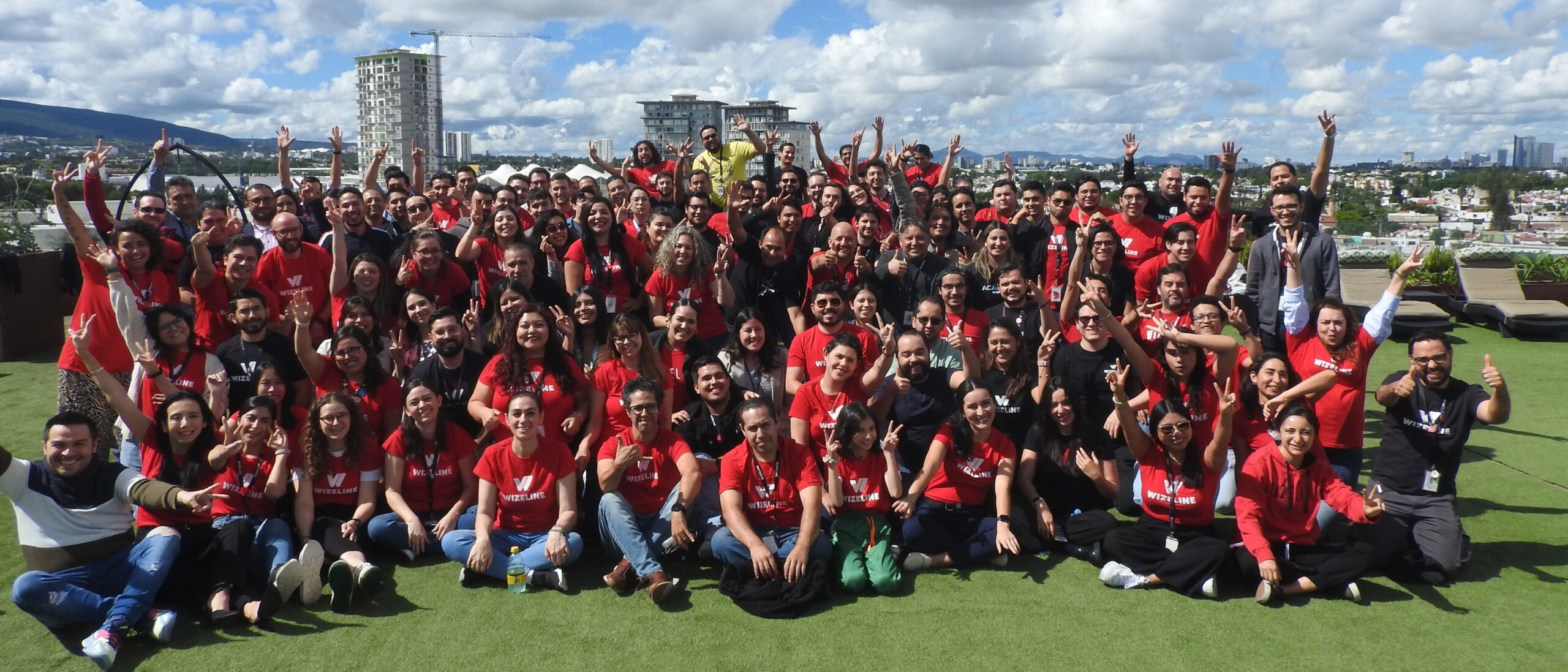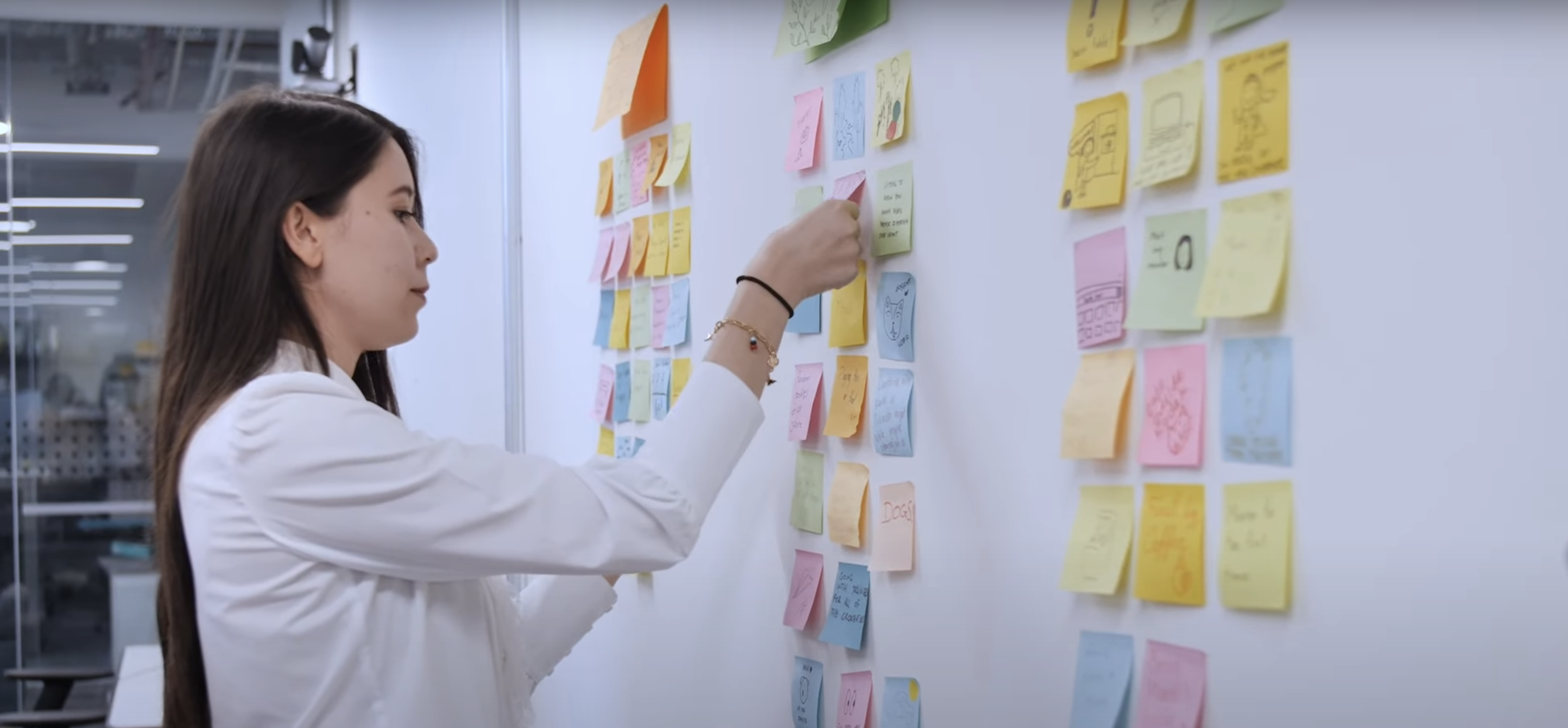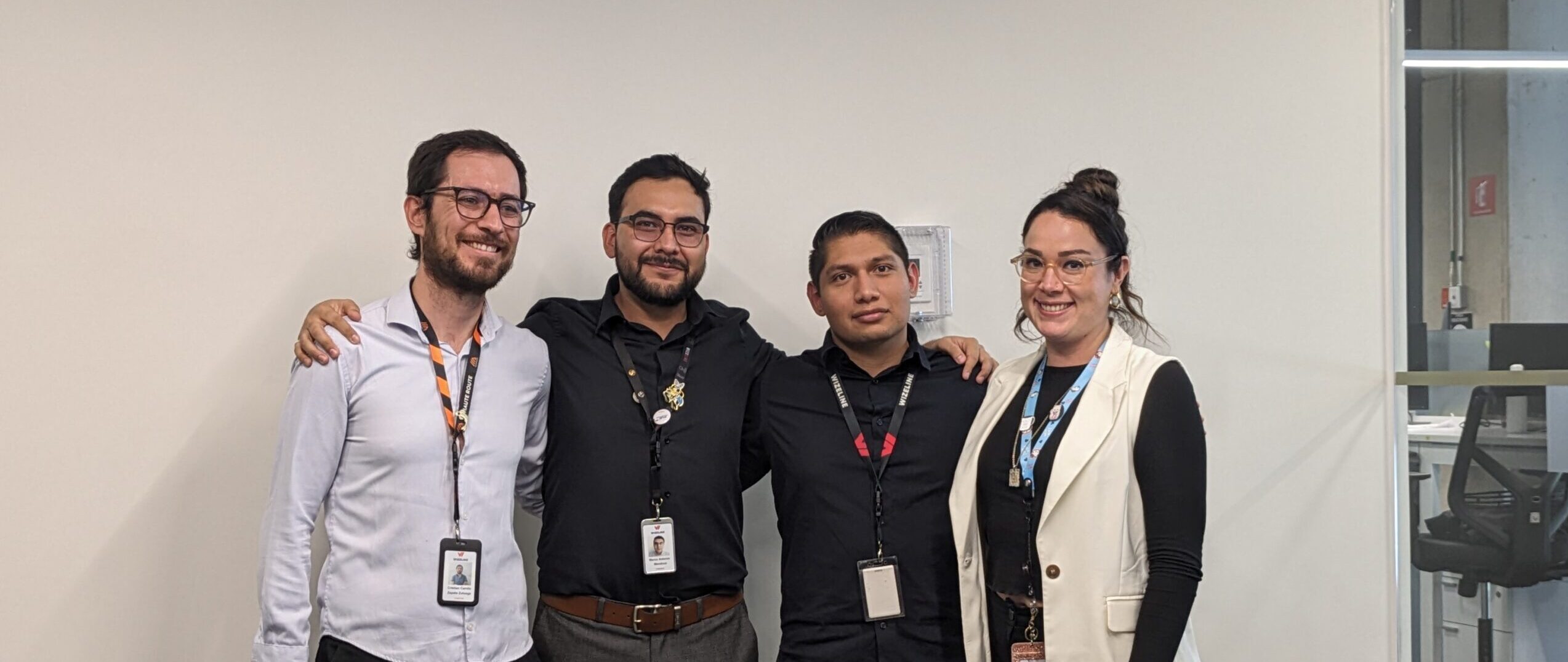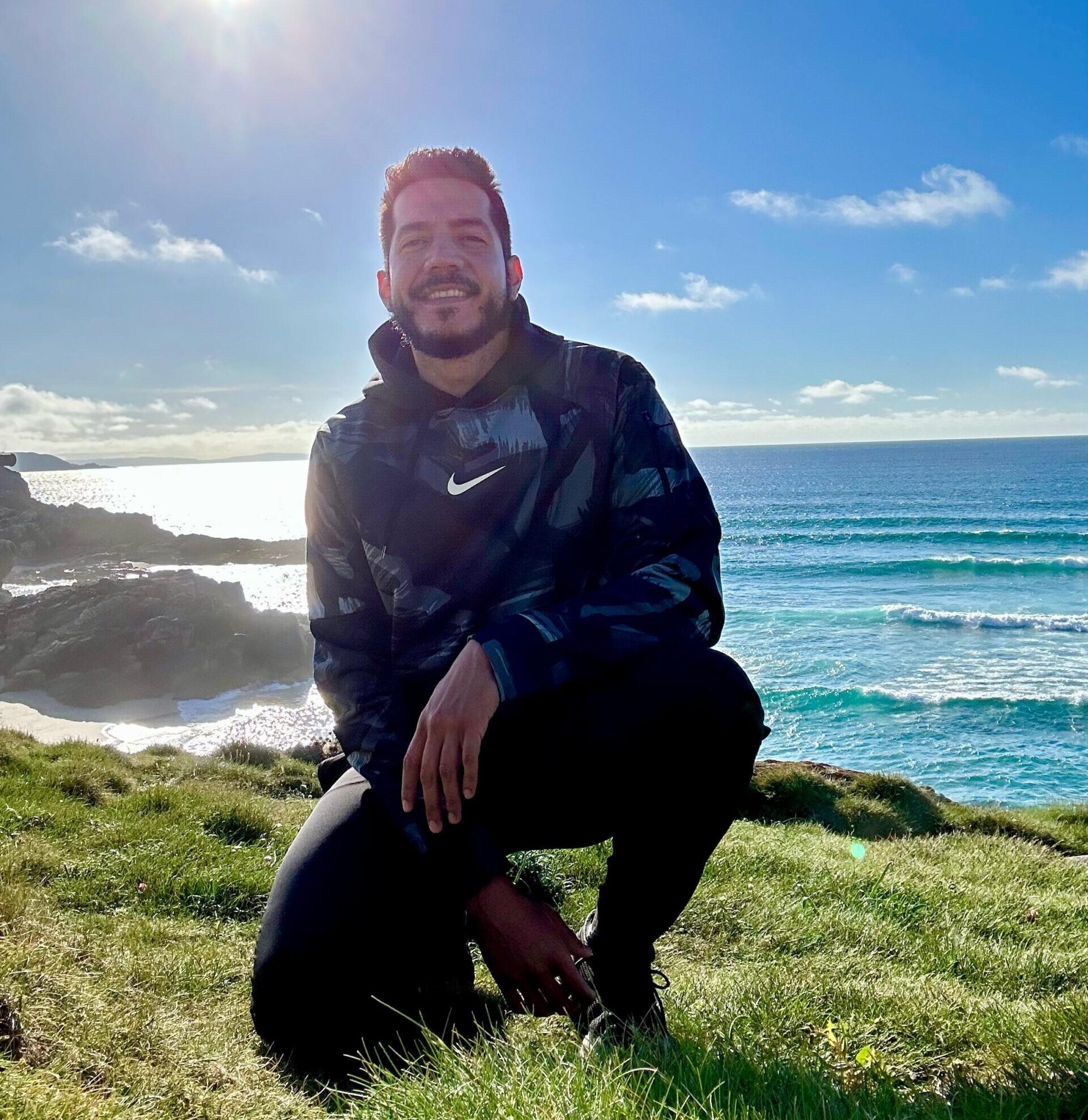We all strive for recognition. In the movie The Intern, starring Robert De Niro and Anne Hathaway, we see a great example of how recognition plays a role in working life today. Every time the startup achieved a goal, or someone went beyond the expectations, a bell was rung. This form of praise was the company’s way to recognize efforts and achieve the fourth level of Maslow’s pyramid—esteem.
At Wizeline, recognition has been one of our pillars from day one. We believe that good actions, small or large, deserve to be recognized. As a growing team of 600 people, ringing a bell like in the movie probably wouldn’t be the best approach. So we came up with Patio—a product focused on employee recognition.
Patio celebrates a team member’s efforts and recognizes them in the form of Kudos through a bot integration in the company’s Slack platform. Every time someone goes above and beyond expectations, we write the Kudos command in Slack, tag the person, and explain what they did to deserve this recognition. This is known as giving kudos at Wizeline. The bot announces it in a dedicated channel in Slack where the whole company can see it.
Patio has three product pillars: Recognition, Performance, and Engagement. The Kudos bot is our first product, and it fulfills the Recognition pillar. We will explain Patio’s future vision in the next sections, so let’s continue our story, shall we?
Patio’s Journey
The opportunity
As a UI designer with a strong interest in product design, I wanted to create value by designing products. I have worked on projects for companies like Discovery Kids, Stripe, as well as some startups. I design user interfaces used by the millions of people who consume media, use an app, or buy a product every day. But it felt like someone else’s vision or dream. I wanted to lead a team, share my idea of a product, plan, research, design, test, launch, fail, iterate, fail again, and learn everything related to managing a product. Perhaps it was because I grew up with books and movies about the life of Steve Jobs and what he did at Apple.
Last year, we said goodbye to our former recognition tool because Wizeline wanted to strengthen its recognition program. This created the perfect opportunity to create a product from scratch that improved the way we praise our colleagues at Wizeline. In the beginning, our vision was to celebrate the efforts of our colleagues because each action, no matter how small, has a positive impact on the culture and deserves recognition. Using this as a basis, we set off to create a robust recognition program for Wizeline and, in the future, other companies.
Recruiting the team and choosing a name
When Steve Jobs was fired from the Lisa project and assigned to the Macintosh project, the first thing he did was to recruit the best people at Apple. I know this sounds great, but at the time, the Macintosh project was a mess. Steve went to each desk, recruiting one by one. You can imagine the same scene at Wizeline because that was the first thing I did after getting the green light to start the recognition project.
The name Patio comes from a trip to Guanajuato. Walking among the alleys, seeing all those beautiful houses, I couldn’t help but notice the patios—a recreational space where good times are shared and memories are made. Why not bring a patio into the work environment? A virtual space that is focused on the well-being of our team. An added bonus—the word patio is easy to pronounce and sounds similar when pronounced in Spanish for our Mexico-based team.
Establishing a budget and workflow
Our first approach was to define the MVP and future releases using Story Mapping, a design tool that allows us to map the actions of the user in chronological order and breaks it down into actionable steps that we can prioritize. After defining the product, the next step was to get a budget approved. Wizeline always supports internal initiatives, either with talent or money. We have a budget for employee projects that anyone can request. We applied and received credits to use our AWS environment.
In the beginning, we moved slowly because it was a side-project, and we were trying to figure out how we can work asynchronously.
Now that we had the product defined, the team, and the budget, we needed a project manager. This was a decisive factor in launching the product as soon as possible and in a lean way. It has been gratifying to see the impact of before and after a project manager joined the Patio team. We now have better control of the product versions, and each ticket has its acceptance criteria. However, the most important thing of all has been to establish the rules as a team. We follow an agile process, and we iterate on this process with retrospective meetings every two weeks.
Building Patio
When the team started this project, we had set goals that we wanted to accomplish. The first was to standardized the different efforts made by the team into a single project that could help us to be a scalable product.
The team started migrating our initial architecture from a Google Cloud architecture to AWS because most of the new team members had more experience with this provider. We conducted ideation sessions about the architecture and decided to separate our concerns into three main priorities—the recognition bot, the API-REST, and the dashboard.
That was the point at which we decided to focus on our Patio Slackbot which was the main feature needed to replace our previous recognition tool. At the same time, we started experimenting with the API, which was second on our list of priorities, because we needed to centralize the information of the tool provided by the other two sources.
Our current schema is based on micro-services, running on different backend services, provided by AWS which allows us to create a scalable product.
After all these months as a team, we have gained experience from setting product goals. We started to not only implement the features that we have in our backlog, but also started to suggest new ideas to innovate Patio.
The whole project was written using Javascript as the core technology. We also used Slack’s API to interact with our communication tool, ReactJS to create our frontend, and Jest to run unit tests. The code is wrapped with Typescript to help us identify errors easily. And as mentioned, all of these parts of the project are hosted on our AWS infrastructure to ensure our information is secure and that the resources are available.`
We faced some challenges along the way, such as coding integration, which was solved by enabling pipelines that allows us to integrate new code into our codebase but also to run the QA process and to automate the deployments. We are trying to follow a Shift Left approach for early testing of each feature that the team is planning to release. We have failed in some aspects but learned from every instance and consistently collect feedback from different stages to improve not only as developers, but as a team.
Preparing to launch
After exhaustive testing, we were ready to launch. I had the email ready, the bot was already installed in Wizeline’s Slack ecosystem, and I couldn’t even sleep that night because of the excitement. I opened the email window where I had the draft ready, going over and over the contents of the mail as if I had just written it. I prepared to press the send button, and it was then I realized the impact that this represented. Merely moving the mouse felt so heavy. It was the first time since I’ve been at Wizeline that I was going to send an email to the entire company.
On Wednesday, April 22nd, Patio was officially launched. The product that we had been working on for months was finally available in the company’s Slack, and now anyone could make use of it.
Roadmap to the future
Now that we have the Kudos bot working, our plan is to build a leaderboard for the whole team to see the top receivers and the top nominators.
After two months using the Kudos bot, we can see how Wizeline’s recognition culture has returned. Kudos has been a critical way to recognize and say thanks during these quarantine months when everyone is working from home.
We are brainstorming ideas and doing further research to see how the Patio product can boost performance and engagement at Wizeline. Stay tuned!
Meet the team
The Patio project has been a team effort. I want to thank the team for the leap of faith and hard work.
April Lanier, Paul Díaz, Manuel Puentes, Jonathan Peraza, Roberto Antelo, Maritza Esparza, Guillermo Rebolledo, Carlos Martínez, Johan Tabori, Duke Nguyen, Mahroz Nakhaie, Luis Carbajal, Maye Gómez, Edmundo Vidaña, Jesús Pacheco, Antonio Oropeza y Sandra Barba.
Special thanks to Dalid Orozco for our branding, Elba Ornelas and Eduardo Celis for your advice, Luis Govea and Roger Gutiérrez.
